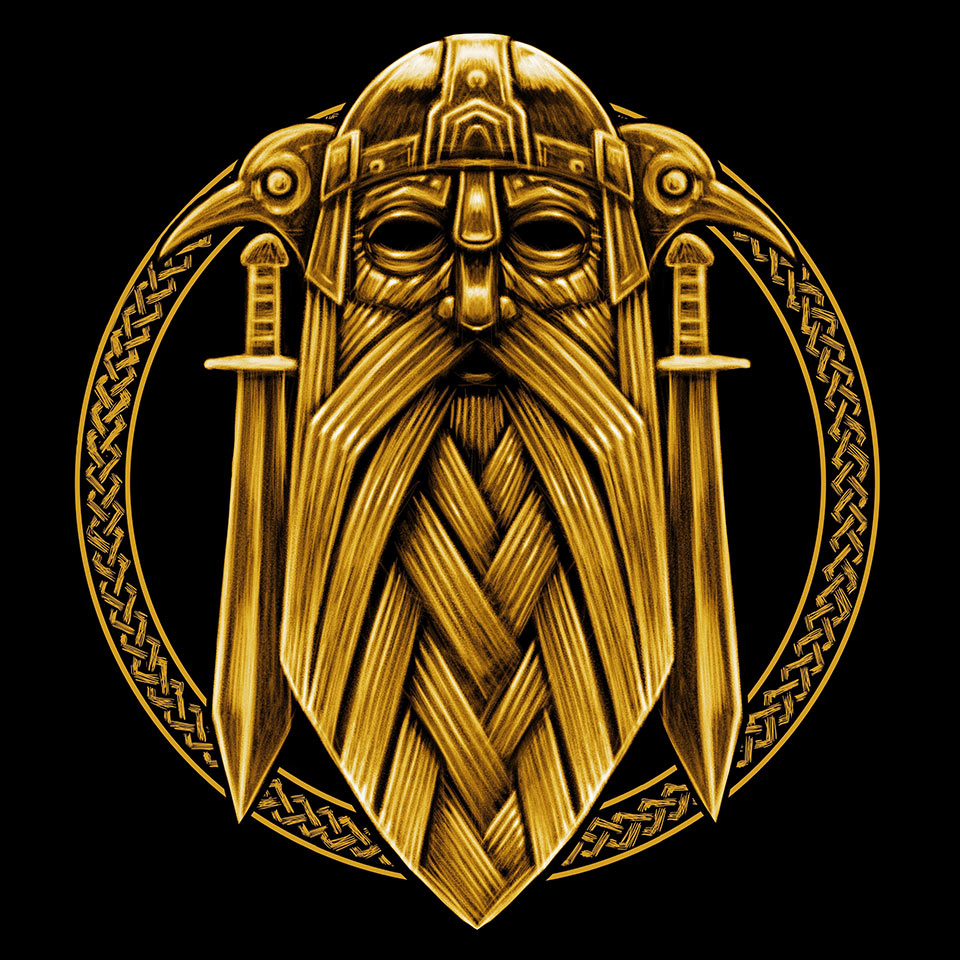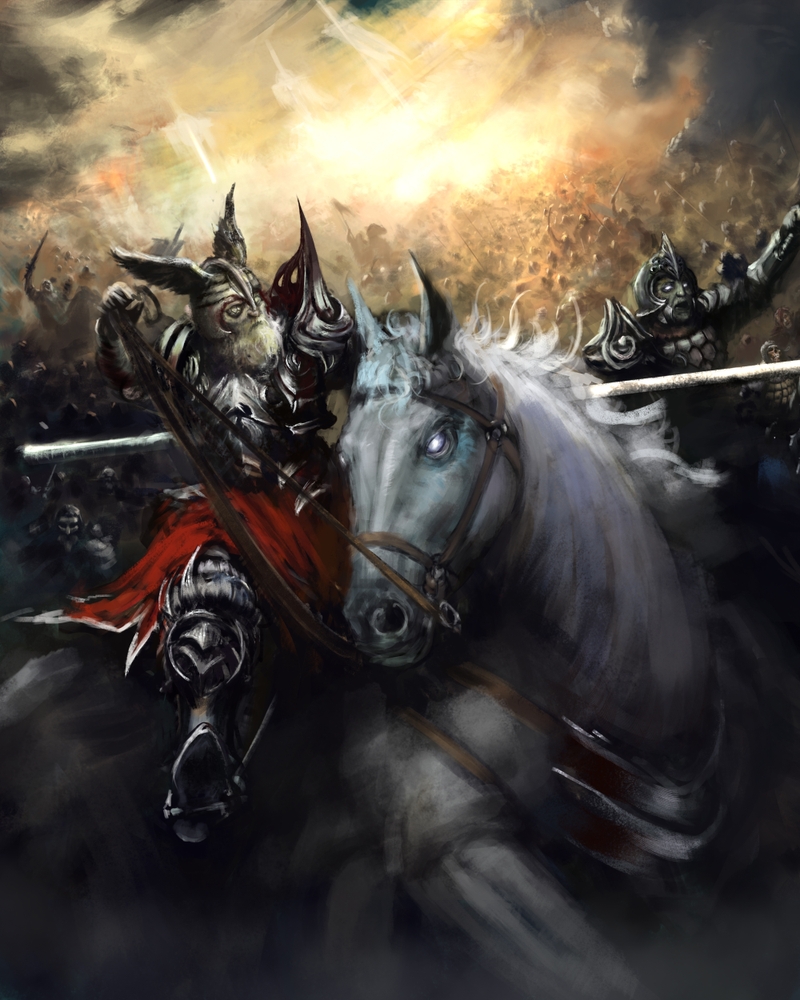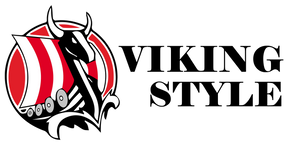Odin is one of the most important gods in Norse mythology, and is a highly complex character to summarise within the scope of one article! In many ways, Odin embodied qualities that were contradictory in nature, yet his worship spanned the best part of a continent for centuries. But just how much do you know about the AllFather of the Norse pantheon?

Who is Odin?
Known as “Woden” in old English (inspiring our word for “Wednesday”… literally “Woden’s Day”!) Odin is the king of the Norse pantheon, and holds the title of “Allfather”. He’s associated with wisdom, magic, poetry, prophecy, victory and death. Some of these traits, like prophecy, were considered to be “unmanly” by the Norse, so Odin’s ability to hold these gifts in tension with many “manly” aspects is quite unique.
Odin was there at the very beginning of the Norse creation myth, and helped to slay the proto-giant Ymir: the first living thing. Ymri’s flesh, skull, bones and blood were then formed into the Norse universe. However, Odin not only played a part in shaping these remains into the form of the earth, skies, seas and plants, but also took an ongoing role in the shaping of human destinies. Odin himself infused the very first humans - made from wood - with the breath of life and spirit.
Odin ruled from his seat in Asgard, but often disguised himself to travel the mortal realms, ever in pursuit of wisdom and knowledge. As a result of his many journeys on earth, lots of human heroes were sired by Odin. No matter where his wanderings took him, he was generally accompanied by his two ravens, Huginn (Thought) and Muninn (Memory), who sought out new intelligence for him and served as his eyes and ears in the nine worlds. He also counted 2 wolves, Geri and Freki, as his allies, and rode around the nine realms in the saddle of the 8-legged horse, Sleipnir.
Who is Odin's Father?
In Norse mythology, Odin's father is Borr. However - and perhaps surprisingly - the character of Borr is considerably less defined than that of his famous son. Borr was thought to be a primordial god who sired the Aesir: the first generation of Norse gods. Borr’s father, Búri, was the forefather of all the gods, and one of the very first characters in the Norse myth. As a result, Odin inherited part of the creative cosmic force from his father. Borr was married to Bestla, a frost giantess, and there is some speculation that he was related to fire to provide a contrast to her icy blood.
What is the Rest of Odin's Family Tree?
Borr and Bestla had two more sons: Vili and Ve. The brothers Odin, Vili and Ve therefore comprise the Aesir. Odin went on to marry the goddess Frigg, a powerful figure who was strongly associated with foreknowledge, wisdom and marriage. Odin’s throne was named Hlidskalf, and he and Frigg ruled Asgard as king and queen. They had two sons: Baldur, the beautiful god who was beloved by all, and Hodr, a blind god who was presented as a dark figure.
However, several other gods are also named as “sons of Odin” in the Eddic poems, although not all of them were born to Frigga! Odin was a famed womaniser, and openly boasted of his many affairs. Thor (whose mother was Jörð, the personification of earth), Vale (whose mother was the jötun Rindr) and Vidar (whose mother was the jötunn Gríðr) were the most famous of these sons, while Eir was perhaps the most well-known daughter of Odin. Odin was also the male progenitor of the famous valkyries, and some writings describe him as the father (or sometimes the stepfather) of Heimdall, Bragi, Tyr and Hermod.
The intricacies of Odin’s family tree don’t end there though, as he also served as a father, foster-father and mentor to many human heroes, like Sigurd. Additionally, Odin’s marriage to Frigg connected him to the Vanir, another group of deities in Norse mythology. The Vanir god Njord was Frigg's father, making him Odin's father-in-law. Odin's descendants included several notable figures like Magni and Modi (sons of Thor), and Skadi (a giantess who married Njord and became a goddess).
What Does Odin Look Like?
Odin was a shapeshifter, so could technically look like a great many things! By falling into a trance, he could send out his soul in the form of another person or even a 4-legged animal, a bird, a fish or a snake. However, he was usually presented as a venerable, yet imposing, male figure with long white hair and a sweeping grey beard. His one eye - covered by an eye patch - is perhaps his most enduring characteristic, although he was often depicted wearing a cloak and a broad-brimmed hat that cast a shadow on his face. He frequently carried a staff to lean on during his wanderings, or even an ornate spear known as Gungnir: a weapon of tremendous power that was said to never miss its target when thrown. Odin is said to have worn a ring named Draupnir, which “dripped” to form eight new rings every nine nights.
What Was Odin the God Of?
As we’ve said, Odin was a highly complex figure, and strode through the pages of Norse mythology as much more than just “the god of wisdom” that he’s sometimes reduced to. For instance, Odin was a seeker of prophecies and signs (learning from Freyja) that allowed him to predict the future. He was a god of battle and death, which explains why he sometimes appeared as an armoured figure who wielded Gungnir, despite him not always being depicted as a warrior (like his Son, Thor). It also explains how he was able to welcome half of the warriors who were slain in battle to his hall, Valhalla. He was often invoked by warriors who sought victory and strength in combat, although it’s said that he wasn’t generally concerned with average wariors, and would favour only the worthy. Unlike Tyr, who was concerned with law and justice behind war, Odin cared little for the reasons behind a conflict, revelling in the raw and chaotic frenzy of battle. In addition to being a patron of warriors, Odin was also revered for his divine knowledge of mystical arts, and was said to have discovered the runic alphabet. He was a patron of poets, bards and scholars too. As the chief of the Norse pantheon, Odin was associated with noble kings and leaders. Wind, storms and - rather gruesomely - the gallows were linked to Odin as well.
How Old is Odin?
Odin existed from the earliest times of creation and, although he did have a father, was often depicted as an almost eternal and timeless figure. It’s therefore not possible to assign a specific numerical age to Odin, especially given that he was thought to be ancient enough to have experienced countless cycles of death and rebirth. However, Thor is sometimes described as being over 1,000 years old, so Odin is envisaged as being much older. His aged portrayal also contrasts with the Vanir, the younger gods.
What Were Odin’s Powers?
As the wisest (and arguably most powerful) of the Norse gods, Odin was believed to possess a vast range of magical traits. He could see into the future, and enlist the aid of wolves and his two ravens to directly observe almost any event that occurred within the nine realms. His shapeshifting abilities allowed him to alter his appearance and form at will, and his discovery of runes meant that he could prepare charms, curses, and spells that gave him control over supernatural forces. Despite not being a god of healing in a strict sense, Odin possessed a mastery of remedies and elixirs, and could even perform a temporary resurrection upon those who had died. As a war god, Odin could enhance the fighting prowess of any warrior he wished to grant victory to, imbuing them with a battle frenzy. As you’d expect of Thor’s father, Odin had some dominion over the wind and storms during tempestuous weather too.

How Did Odin Lose His Eye?
Odin lost his eye willingly so he could gain cosmic wisdom from Mimir, an ancient Norse god and keeper of a well of knowledge that lay among the roots of Yggdrasil, the sacred tree of the world that connected the nine realms. Mimir’s knowledge surpassed even Odin’s, which the latter connected to his ability to drink the waters of the well. Mimir demanded a sacrifice from Odin before he would allow the latter to drink from his prized well, so Odin tore out one of his own eyes and dropped it into the sacred water. Odin was permitted to drink from Mimir's Well in return, giving him unparalleled cosmic insight and prophecy. This story is one of the main reasons why Odin is sometimes associated with sacrifice; he gave up his eye willingly in his relentless pursuit of wisdom at any cost.
Losing one eye was a significant moment in Odin’s life, as it opened his spiritual eye to the intricate workings of fate and higher mystic forces. After this event, Odin was often depicted wearing his signature eye patch or a wide-brimmed hat that served to hide his disfigured appearance. The tale of Odin and Mimir doesn’t end here though, as Mimir was later to be decapitated after being sent as an emissary to the Vanir. Odin realised the value of the wisdom that was still locked within Mimir’s severed head, embalming it and empowering it with speech. Thus, Mimir’s head continued to guide Odin with whispered words of wisdom.
More Facts About Odin
- In some myths, Odin once hung himself from a branch of Yggdrasil, impaled by his own spear, Gungnir, to discover the secrets of ancient runes. He remained in this agonising state for nine days before he achieved his goal. Some say it was this symbolic, ritual suicide that unlocked Odin’s abilities to cure the sick, calm storms, foil his attackers, and even make women fall in love with him.
- Odin’s poetic skills were due to his theft of the mead of the skalds. He seduced and slept with the guardian of the mead, Gunnlǫð, for three nights, prompting her to allow him 3 sips of this wondrous substance. However, Odin instead drains the containers dry, and flees her wrath in the form of an eagle.
- Odin was the leader of the Wild Hunt in Norse mythology: an army of the dead who rode across winter skies. The hunt consisted of a wide variety of animals, deities, and the spirits of those who sleep, and was said to terrify those who saw them dance across the heavens. Indeed, glimpsing the Wild Hunt was often thought to be the harbinger of catastrophe, and some who the hunt passed over were said to be abducted and left for dead in the underworld.
Who Killed Odin?
Odin is destined to meet his end during the cataclysmic events of Ragnarok, the great battle at the end of the world in Norse myth. During the battle, which will claim the lives of many of the Norse pantheon, the great wolf Fenrir (offspring of the trickster god Loki and the giantess Angrboða) will break free of the chains that hold him and align himself with the forces of chaos, consuming several gods in his fury. Despite his awareness of the prophecy that foretells his impending doom, Odin will march to defy Fenrir, engaging the wolf in battle. However, despite all his power and wisdom, this is a foe that not even Odin can vanquish. Even the gods cannot overcome fate, and the Allfather will be devoured by the ravening beast.
Odin's death is a pivotal moment in the Norse mythological narrative, signalling the beginning of the end times and the ultimate confrontation between the forces of order (the Aesir and other benevolent beings) and the forces of chaos (monstrous creatures and giants). After Odin's death, the world is destined to be engulfed in flames and chaos, leading to the eventual rebirth and renewal of the cosmos. However, all is not lost, as Odin’s favoured son, Vidar, will avenge his father and the other gods who fall in Ragnarok. Vidar will crush Fenrir’s mighty jaw with his shoe, defeating the wolf. Vidar will then ultimately survive Ragnarok to usher in a new world order, continuing Odin's legacy and lineage.


